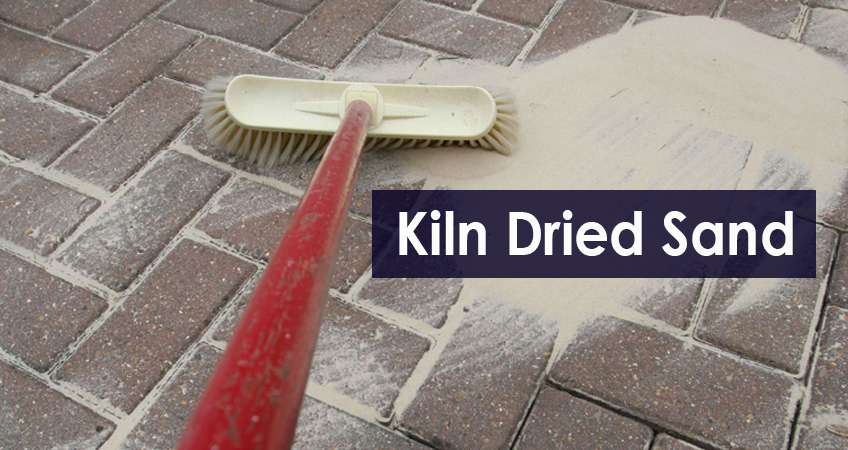Kiln-dried sand is dry, fine sand with no moisture content at all. It is popularly used for filling block paving and paving slab joints. It also prevents their movement while allowing drainage. This type of sand stops water ingress and pavements from getting loose.
We will give you a comprehensive understanding of what kiln-dried sand is and how it is used in block paving in this post.
How is Kiln Dried Sand Gotten?
Kiln sand is sand that you dry in a kiln (a furnace for baking, drying or calcining lime). For this type of sand to work as it should, water must completely be removed from it. It is a non-staining type of sand.
What are the Other Names for Kiln Dried Sand?
Popular among builders, kiln-dried sand has several other names. It is often referred to as jointing sand, because of its use in block paving; dry aggregate sand because of its low moisture content; and silver sand because of how fine it is. It is also referred to as silica sand by some brands.
Silver sand is available in different colours, ranging from yellow, grey, buff, silver and natural white. However, only one producer supplies silver-coloured dry aggregate sand in the UK at the moment.
Why use Kiln Dried Sand in Your Block Paving?
Kiln-dried sand is the ideal type used in strengthening the paving block structure. But why must you use it? Since all the water has been extracted from the paving, kiln-dried sand locks the blocks perfectly. If kiln-dried sand is not used in the joints, they may sink because water will penetrate them. The blocks may also become loose after a few days.
It is essential that shortly after washing your block paving, you replace the lost sand.
Kiln-dried sand usually costs more than the conventional builders’ sand. The cost of drying it in the kiln before the sand is bagged is usually added to its price.
How Much Kiln Dried Sand You Need?
The width of the joint and the paving depth are the two most important factors in determining how much sand you need when replacing the sand in your block paving.
For example, if your block paving is of standard depth (50mm of paver), and you need to re-sand it after cleaning, then you need about 5-10mm of sand. An area of 10-30 square meters would require a 15-25 kg bag of dry aggregate sand to refill.
Where can I get Kiln-Dried Sand?
Silica sand can be gotten from local and online stores around you. You can also buy directly from the companies that manufacture them. Most paving manufacturers like Tarmac, Marshalls, Lafarge and Hanson also supply this sand, as the two materials go hand-in-hand.
How to Re-sand your Block Paving with Kiln-Dried Sand?
There are four easy steps to take when re-sanding your block paving. They are quite easy to follow, and you could do it yourself.
1. Clean your paving: The first thing to do before you start re-sanding is to clean it up as you would normally do. A power washer is a good tool to get the job done quickly. Make sure you do not remove all the sand when cleaning your block paving.
2. Leave your block paving to dry: Allowing your block paving to dry is an essential step to take when re-sanding. The joints and surface need to be thoroughly dried, and this may take a couple of days. If they are damp, the kiln-dried sand will stick to the paving’s sides.
3. Use a broom to spread the sand across the paving’s surface: Ensure that the broom is soft, and the sand flows into the joints. You may remove all the excess sand after the joints are filled.
4. Re-bag the sand and save it for later: Remember that the left-over sand must be stored in a dry place.
How to Protect the Loss of Dry Aggregate Sand?
Re-sanding all the time may take up a lot of costs. Luckily there are easier alternatives for you. A stabilizer, which sets sand is an excellent choice. A sealer is also another option that will prevent the loss of kiln-dried sand on your paving surface.
Even though people use bleach as a substitute for kiln-dried sand, it is not advisable. Bleach contains too much salt and may cause efflorescence on your block paving surface.
In conclusion
Kiln-dried sand is the ideal material for hardening and putting the joints on your block paving firmly in place. The only time it should not be used in your paving, is if it is made to be permeable. In such situations, clean stone chippings should be used in your block paving instead.
Featured Image by Brian Snelson from flickr.com
Read More:


